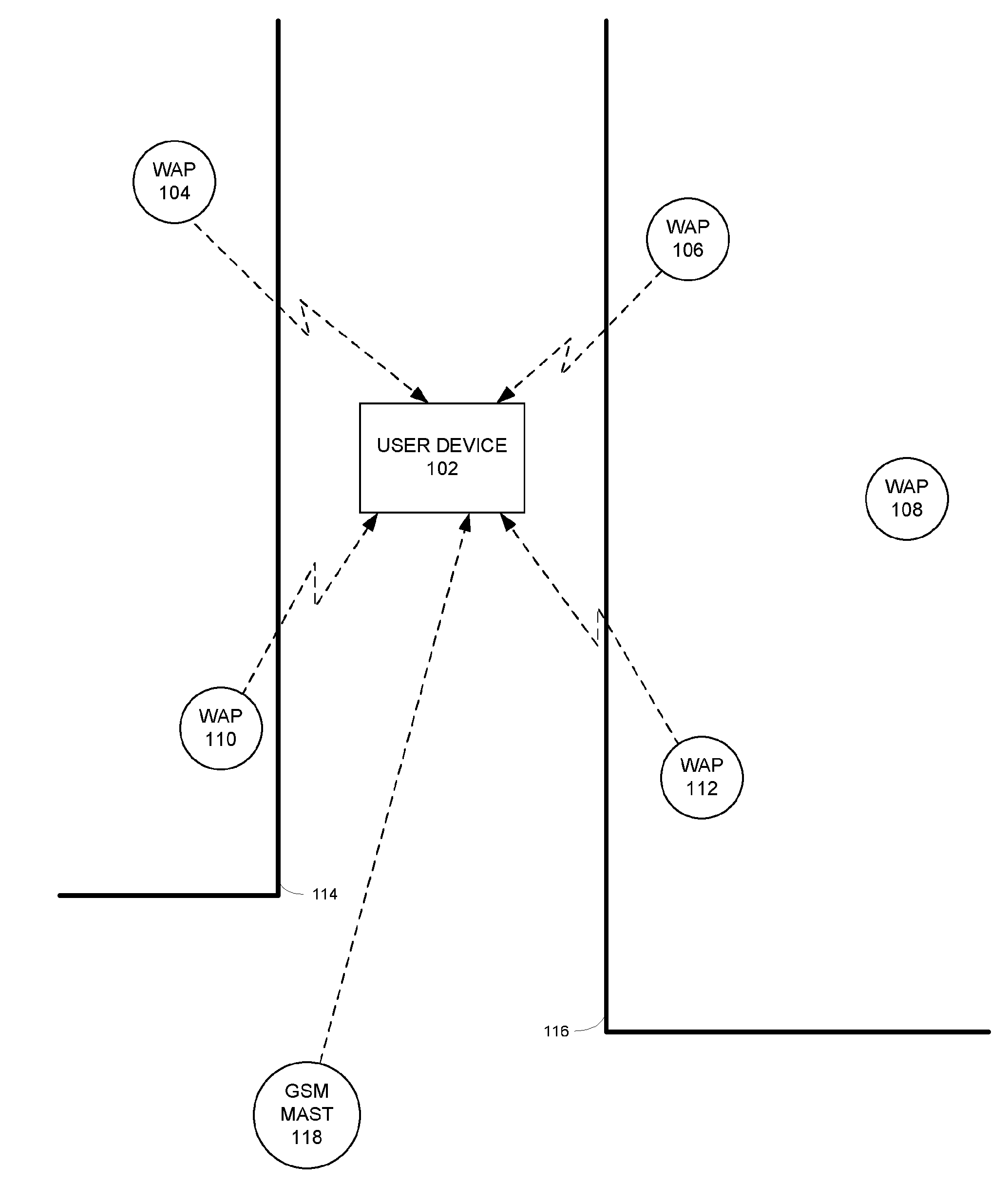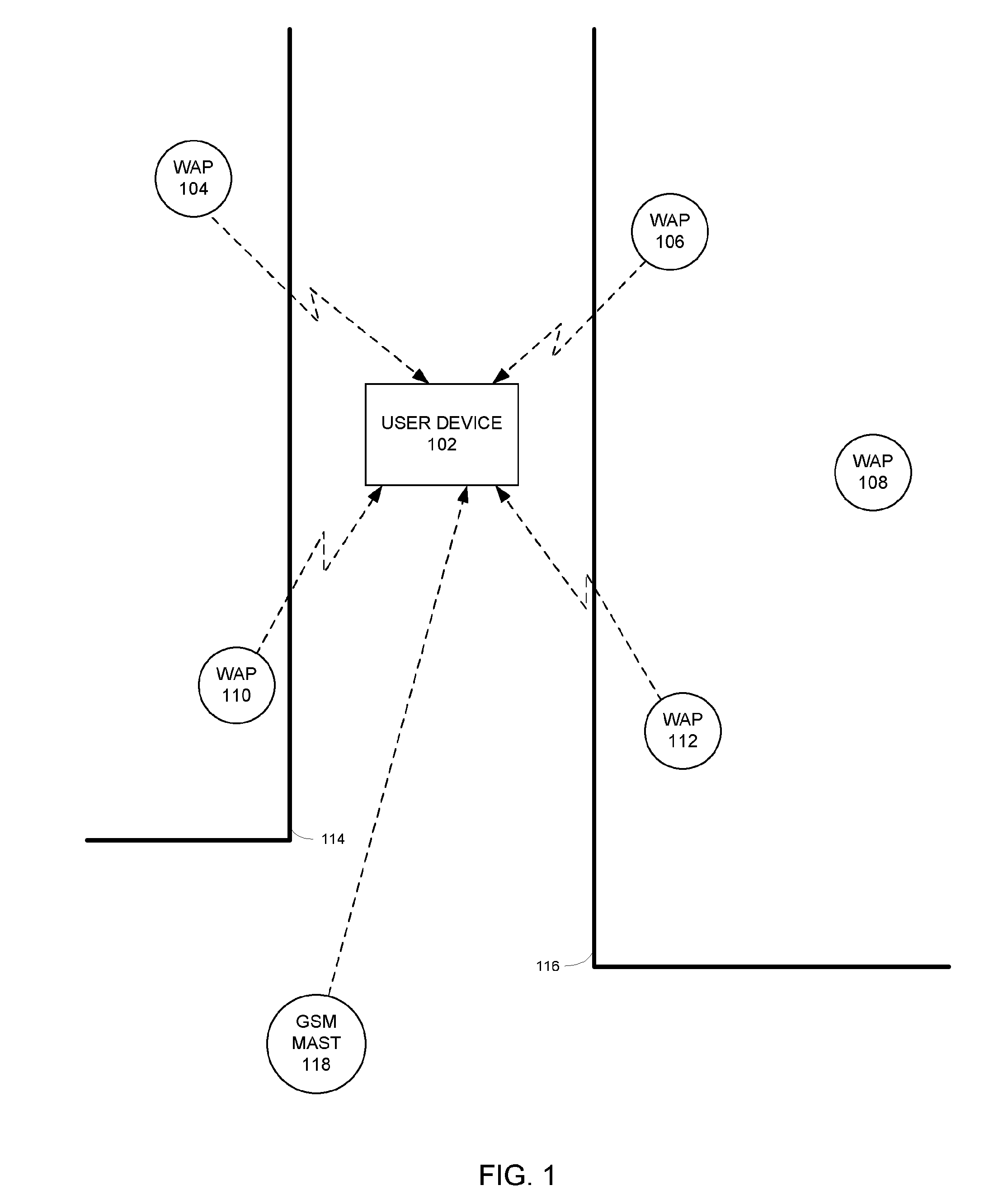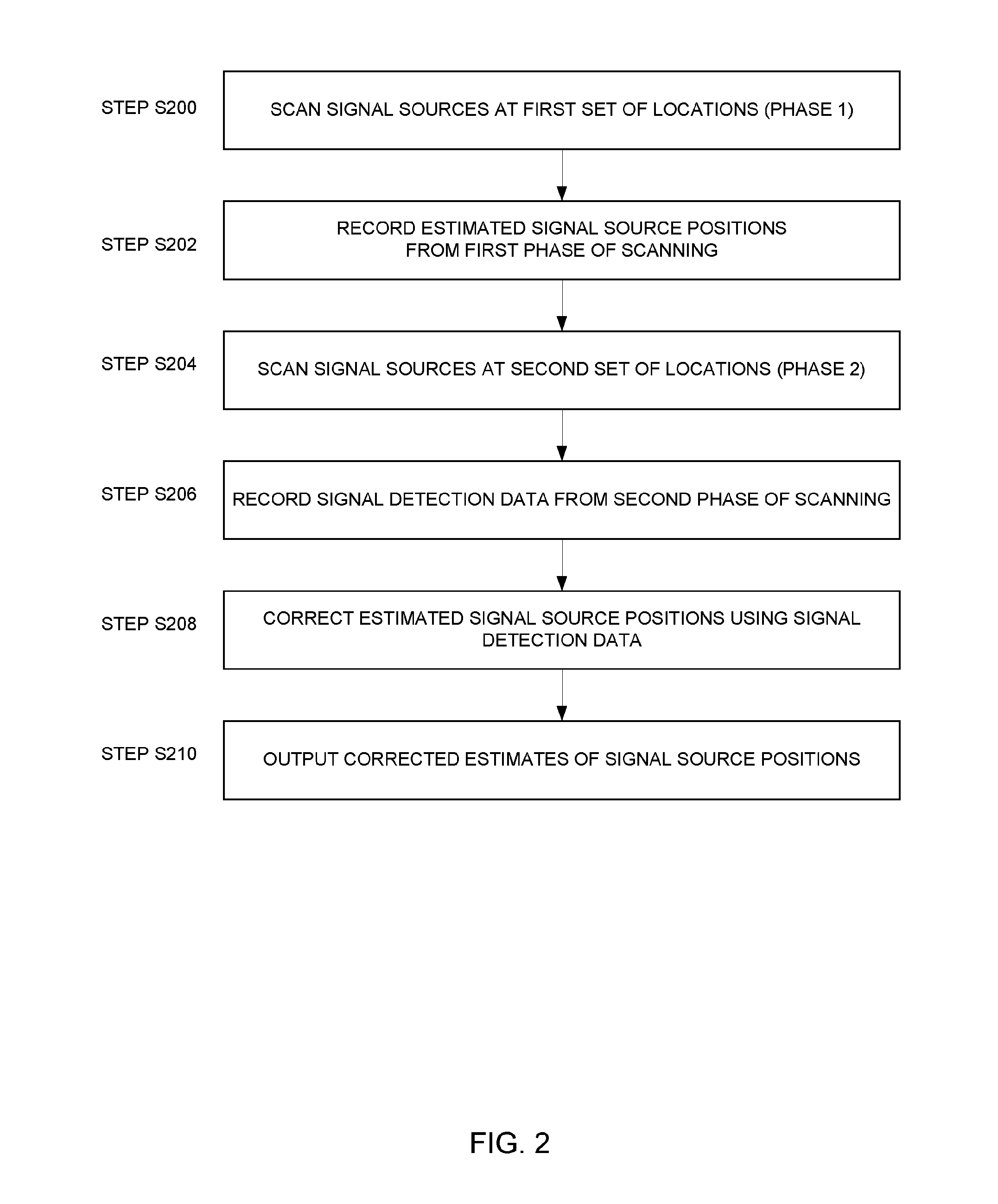Positioning system
a positioning system and positioning system technology, applied in the field of positioning systems, can solve the problems of large amount of data being sent to the location server, inability to easily extend data into regions, and inability to use existing systems, etc., to facilitate the estimation of the position of sources
- Summary
- Abstract
- Description
- Claims
- Application Information
AI Technical Summary
Benefits of technology
Problems solved by technology
Method used
Image
Examples
Embodiment Construction
[0166]A method and system will be described for locating electromagnetic signal sources, with a particular (but not exclusive) application to a system for locating a user device by cross-referencing signals received at the user device with data previously gathered using the abovementioned method and system. Thus, the location of stationary electromagnetic signal sources is estimated. Errors in the estimates of the location of the stationary electromagnetic signal sources are corrected. The resulting locations of the stationary electromagnetic signal sources are later used as reference points for locating a (typically mobile) user device.
[0167]In one particular embodiment a method is described in relation to dynamically determining the location (such as position co-ordinates) of Wireless Access Points (WAPs) or Wireless Beacons in wireless technology-based positioning systems. Predominantly the wireless standard described in this document is Wi-Fi and the positioning system is a Wi-F...
PUM
 Login to View More
Login to View More Abstract
Description
Claims
Application Information
 Login to View More
Login to View More - R&D
- Intellectual Property
- Life Sciences
- Materials
- Tech Scout
- Unparalleled Data Quality
- Higher Quality Content
- 60% Fewer Hallucinations
Browse by: Latest US Patents, China's latest patents, Technical Efficacy Thesaurus, Application Domain, Technology Topic, Popular Technical Reports.
© 2025 PatSnap. All rights reserved.Legal|Privacy policy|Modern Slavery Act Transparency Statement|Sitemap|About US| Contact US: help@patsnap.com



